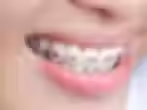How Long Do Braces Take to Fix an Impacted Canine?
- Bright Braces
- Mar 3
- 3 min read
Updated: Jul 22

Canine teeth, also known as cuspids or eye teeth, are essential for a balanced bite and proper dental alignment. These teeth help guide the position of surrounding teeth and provide strength for chewing. However, sometimes a canine tooth does not erupt properly and remains trapped beneath the gums. This condition is known as an impacted canine.
Orthodontic treatment with braces can guide an impacted canine into place, but the length of treatment depends on several factors, including the severity of impaction and the patient’s age.
How Long Does Treatment Take?
The time required for braces to fix an impacted canine can vary. On average, treatment can take anywhere from six months to two years. The timeline depends on how deep the tooth is positioned, how much space is available, and how well the tooth responds to movement.
Factors That Affect Treatment Time
Depth of Impaction
The deeper the impacted tooth is positioned in the jaw, the longer it will take to move into place. A tooth that is only slightly trapped may erupt in a few months, while a tooth that is fully embedded may take over a year to reposition.
Age of the Patient
Younger patients tend to respond more quickly to orthodontic treatment because their jawbones are still developing, making tooth movement easier. Adults may experience slightly longer treatment times due to denser bone structure.
Space Availability
If there is not enough room for the impacted canine to emerge, braces or an expander may be used to create space. This step can add extra time to the overall treatment process.
Surgical Exposure
In some cases, a minor surgical procedure is needed to expose the impacted tooth. After surgery, the orthodontist will attach a small bracket and chain to gently pull the tooth into position. The healing process and controlled movement of the tooth will add to the treatment timeline.
Patient Compliance
Following the orthodontist’s instructions, maintaining good oral hygiene, and attending regular appointments can help ensure the treatment stays on track. Poor compliance, missed visits, or broken brackets can delay progress.
Step-by-Step Timeline of Treatment
Initial Consultation and X-Rays
The orthodontist will take X-rays or 3D scans to determine the position of the impacted canine and develop a treatment plan.
Creating Space
If necessary, braces or a palatal expander will be used to shift surrounding teeth and create enough room for the impacted canine. This process can take several months, depending on the level of crowding.
Surgical Exposure (If Needed)
If the impacted tooth is trapped beneath the gums, a minor surgery may be performed to expose it. A small bracket and chain will be attached to guide the tooth into alignment.
Orthodontic Traction
Braces will slowly guide the impacted canine into place using gentle force. This step can take anywhere from six months to over a year, depending on the complexity of the impaction.
Final Alignment and Bite Correction
Once the canine is fully erupted and aligned, the orthodontist will fine-tune the bite and ensure all teeth are properly positioned.
Retention Phase
After braces are removed, a retainer will be provided to maintain the new alignment and prevent relapse.
What Happens If an Impacted Canine Is Left Untreated?
Ignoring an impacted canine can lead to dental complications, including misalignment, damage to adjacent teeth, and the formation of cysts or infections. Treating an impacted canine early improves the chances of success and reduces the need for more complex procedures later on.

Schedule a Consultation
If you or your child has an impacted canine, early orthodontic intervention can help guide the tooth into place and prevent future dental issues. Schedule a consultation with Bright Braces in Katy, TX, to determine the best treatment plan.
